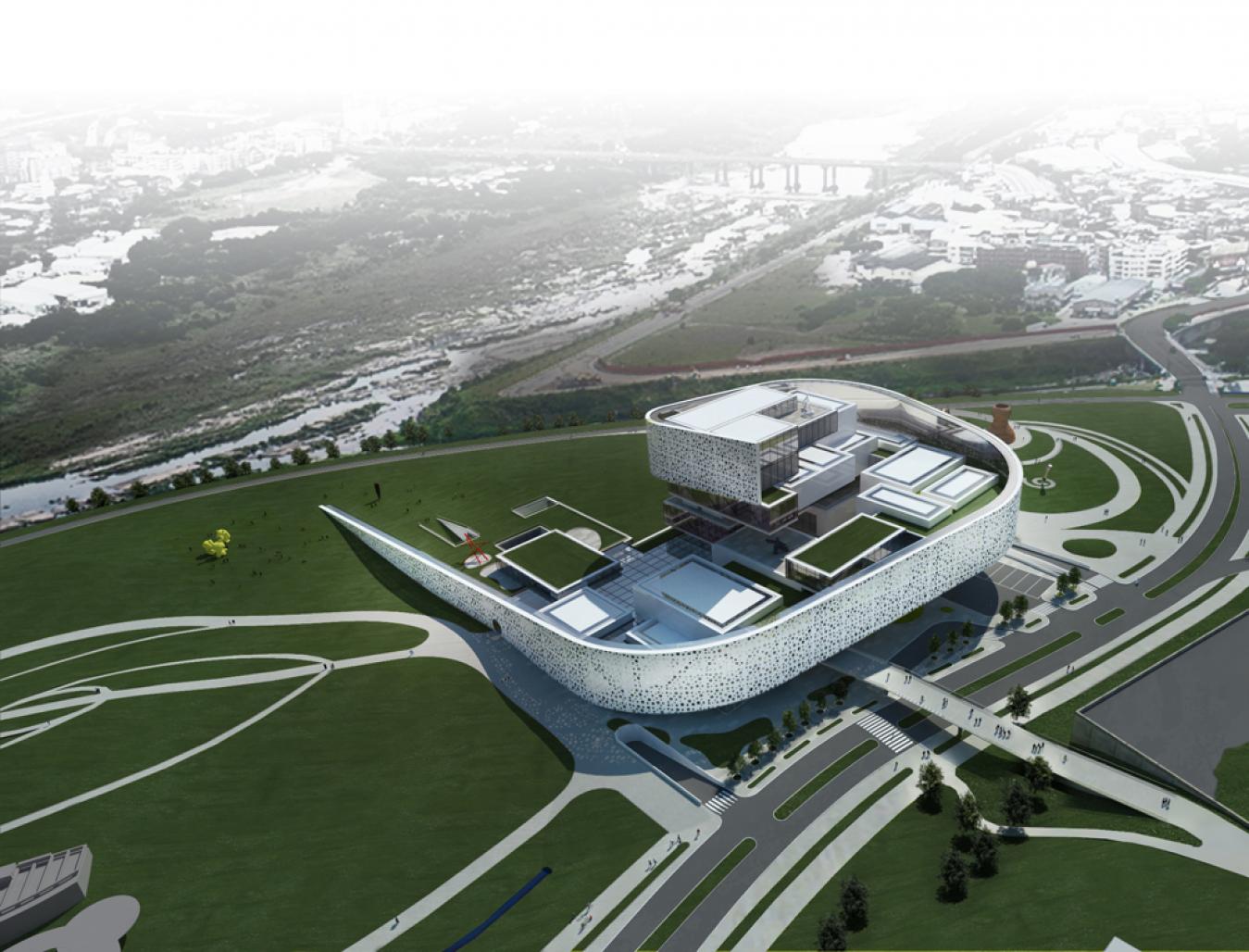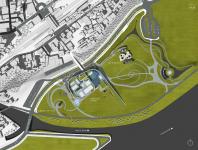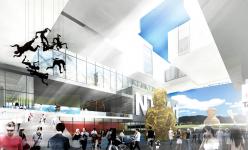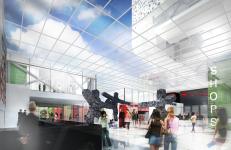Our design for the NTCArt proposes a dramatic physical intervention into the Yingge park landscape in the form of a line. Not unlike the Spiral Jetty earthwork of Robert Smithson, or the meandering Wall installations of Andy Goldsworthy, this line defines a curving edge or a path at a scale that is not immediately legible to the individual, yet acts as an ordering element in the landscape. The line emerges from the ground plane within the park at a continuous slope and follows a spiral path that terminates centrally within the site projecting itself skyward. Its monumental scale is born of the undulating contours of the park landscape and the spiral movement from park ascending into the site is a natural response to the twisting momentum of the two diverging river beds that define the park limits.
Contained within this spiral line, the museum’s programmatic spaces are loosely organized in an organic cascading composition rotating around the central void defined by the spiral. The typical galleries and program elements are conceived as individual 3-dimensional objects. Viewed in the round, these program boxes are given scale and identity, and yet they are clustered together to create a complex urban form recalling the dense composition of buildings that dot the surrounding hills and images of the famous cascading hill town of Jiufen.
Circulation through the museum at each of the six terraced level becomes one of discovery and surprise not unlike the experience of visiting a hilltown. As a counterpoint, the spiral line determines the outer edge of the primary and more direct vertical circulation path through the museum. Layered behind the screen wall, this glazed volume contains stairs connecting each terrace level and serves as the spatial link to breakout spaces adjacent to the clustered galleries.
The exposed exterior surfaces of the galleries, sides, top and even underside provide multiple canvases for nonconventional exhibition use. It will be difficult to predict where the art will be found as in this cascading configuration, the in-between, or accidental spaces and surfaces become opportunities for the casual discovery of surprise installations. The art will reveal itself in new and surprising ways, suspended within the void, appearing on the ledges and terraces, projected onto the many surfaces and engaging with the physicality of the building.
The slipping and sliding movement of the gallery boxes create a series of smaller scale foreground and background objects floating delicately above the site. This design approach maintains the relative compactness required by the desire to impose a limited footprint, yet achieves the rich variety and mix of heights and massing that is desired.
Within this composition, the NTCArt Children’s Museum is conceived as a 2-story container distinct from the main Museum, within which individual program elements as well as a series of exterior voids are arranged. The Children’s Museum is located at the point at which the screen wall emerges from within the landscape to provide an immediate relationship to both the lobby and the park. The landscape slopes up onto the roof, offering views to and from the interior and providing direct access from the park. Conceived as a sunken “toybox” in the park, children are encouraged to experience the park and museum together as the limits of each are left unclear.
2011
2011
Client: New Taipei City Government.
Facility: Art Museum
Location: Taipei, Taiwan.
Size: 53,000 sm
Status: International Competition Proposal.
Design Architect: ZERAFA ARCHITECTURE STUDIO
Design Team: Jason Zerafa, Joaquin Boldrini , Bridgett Cruz, Katherine Moya.
Associate Architect: Gregory T Waugh AIA
Structural Engineer: Gilsanz Murray Steficek LLP.










